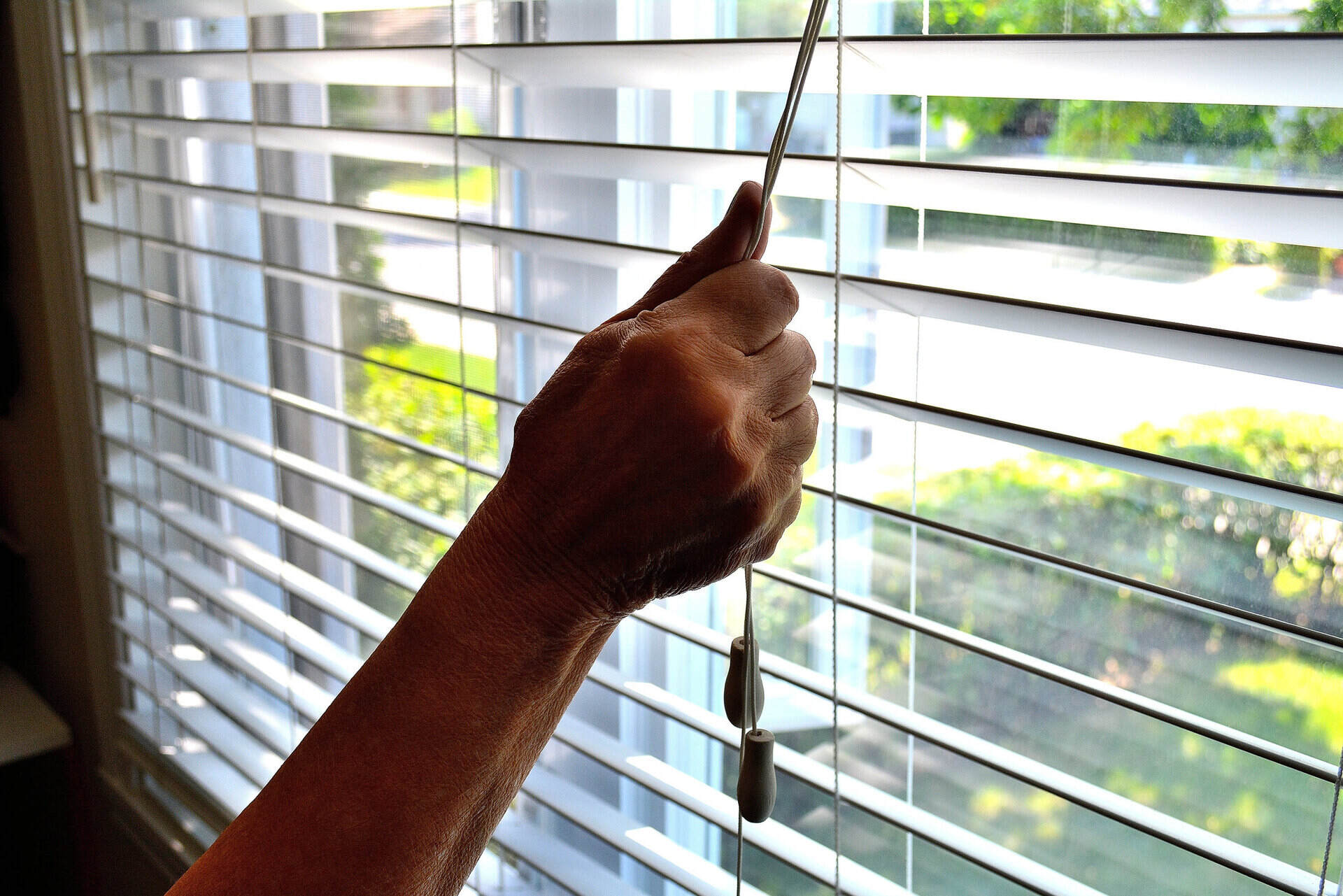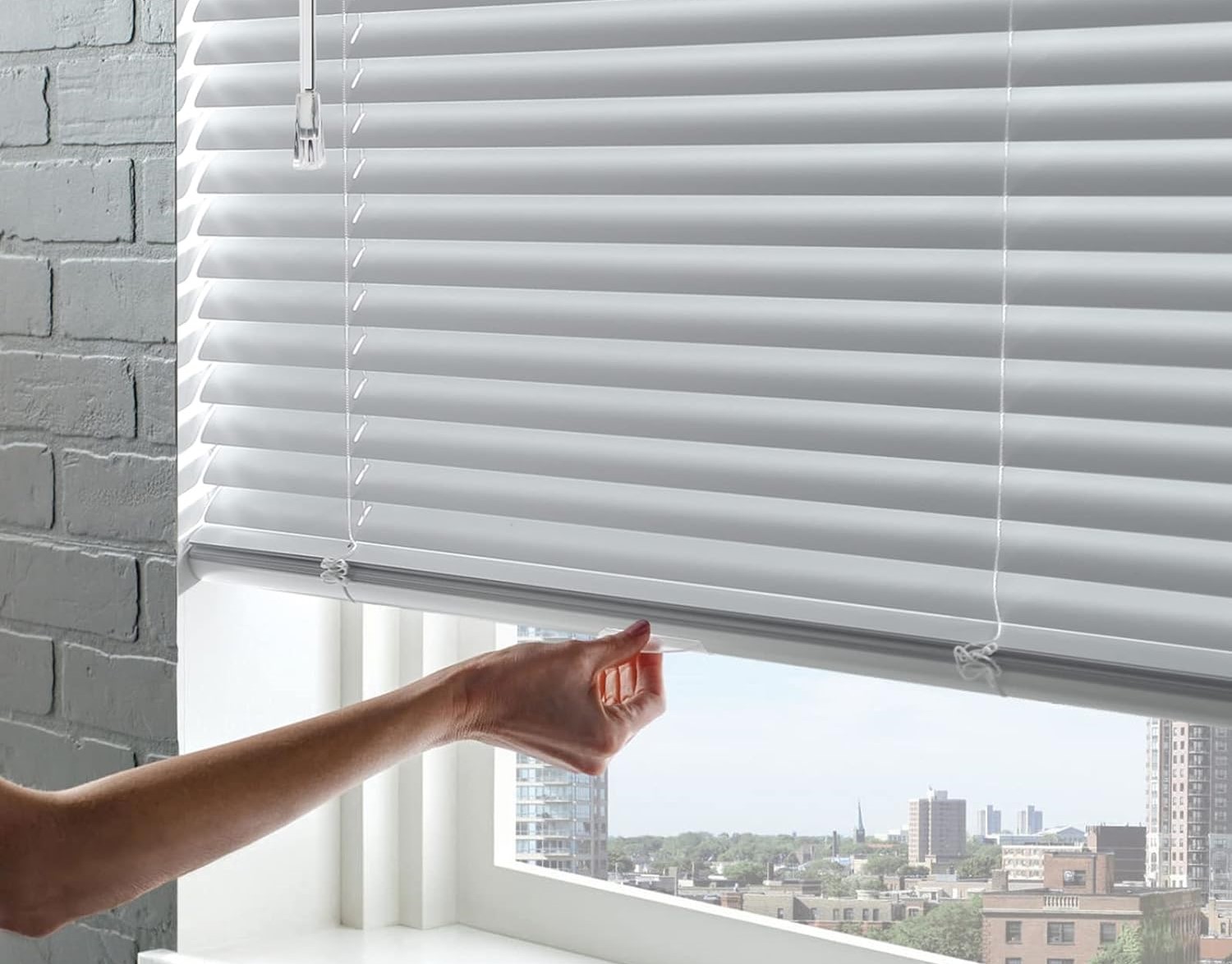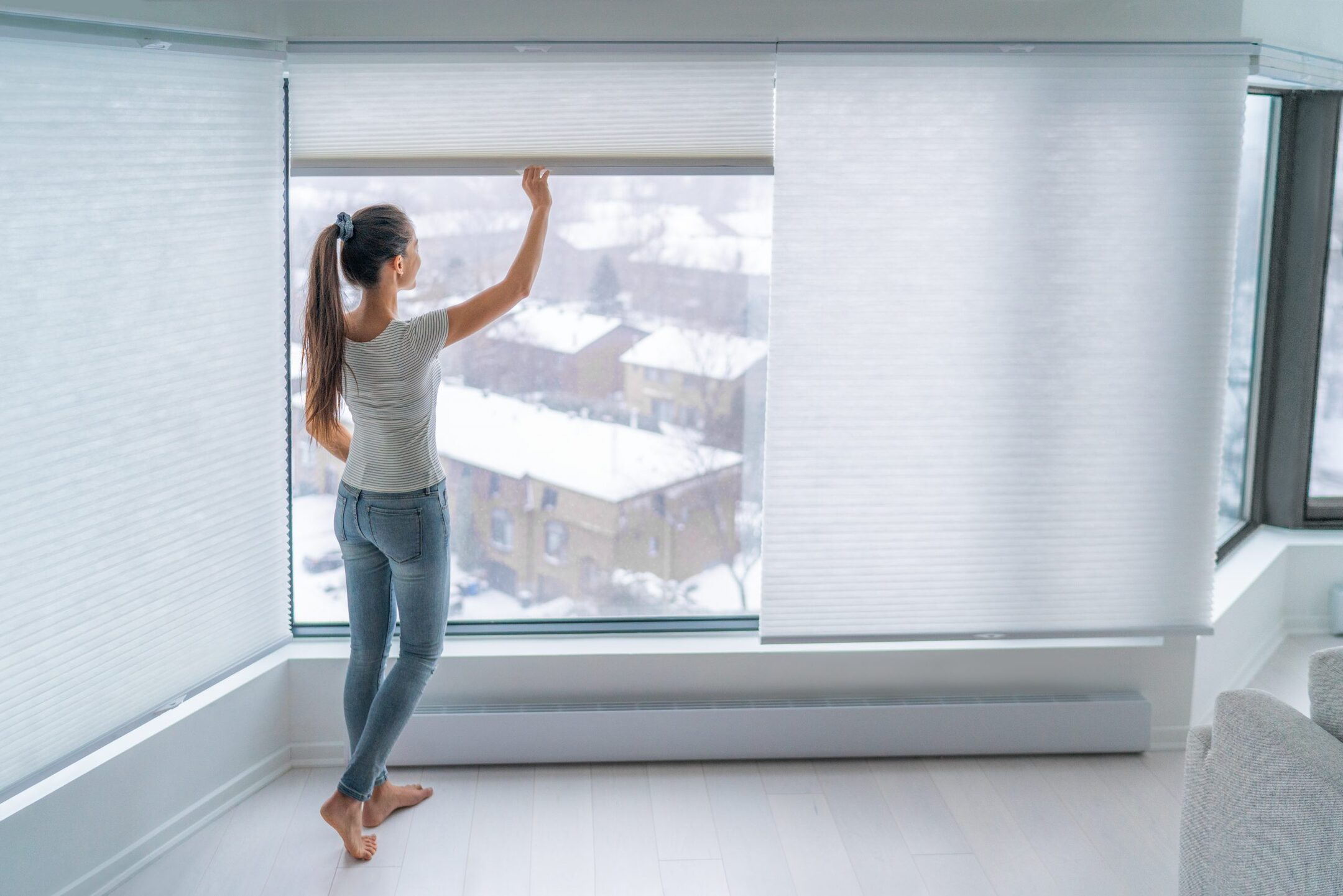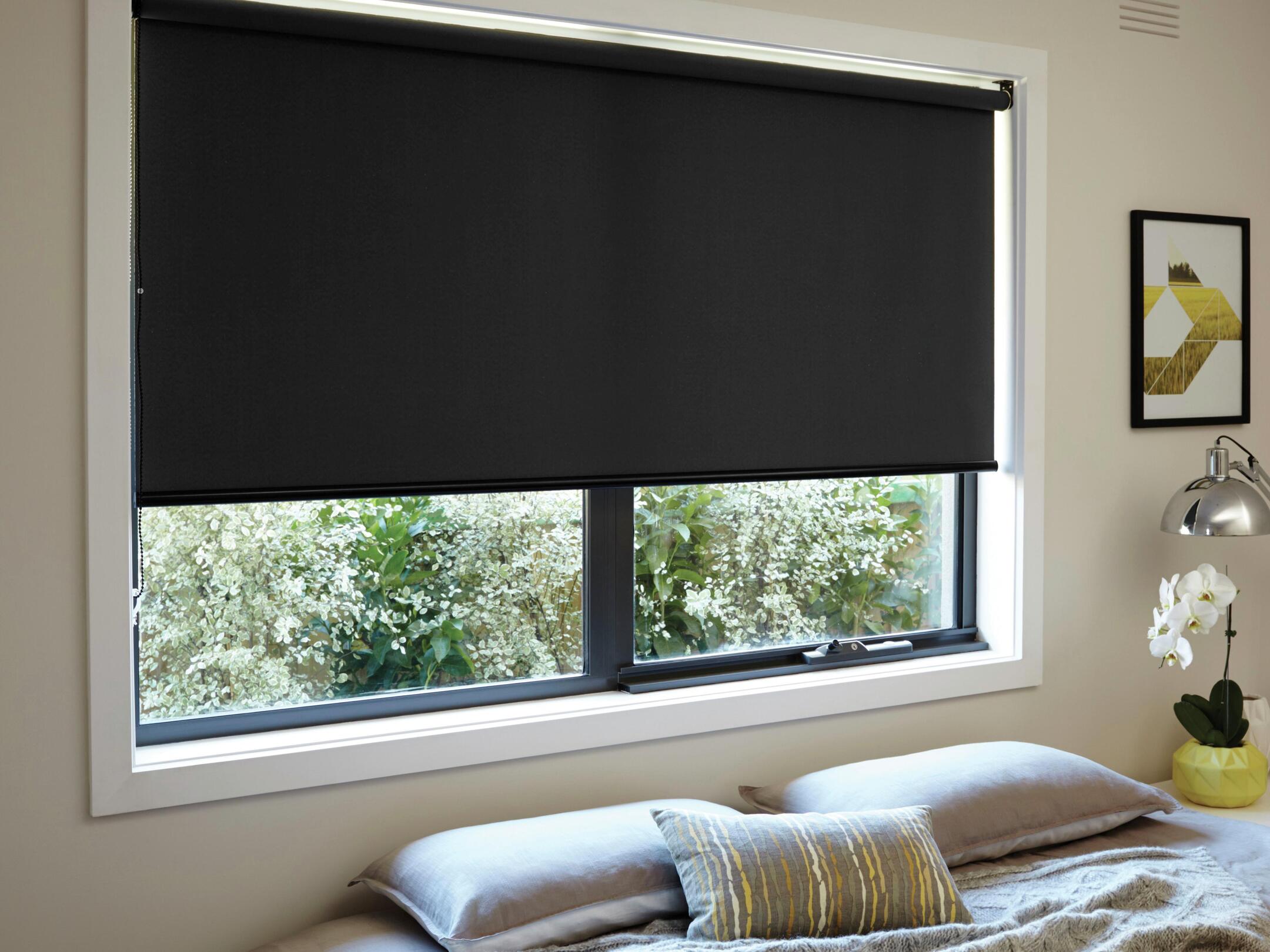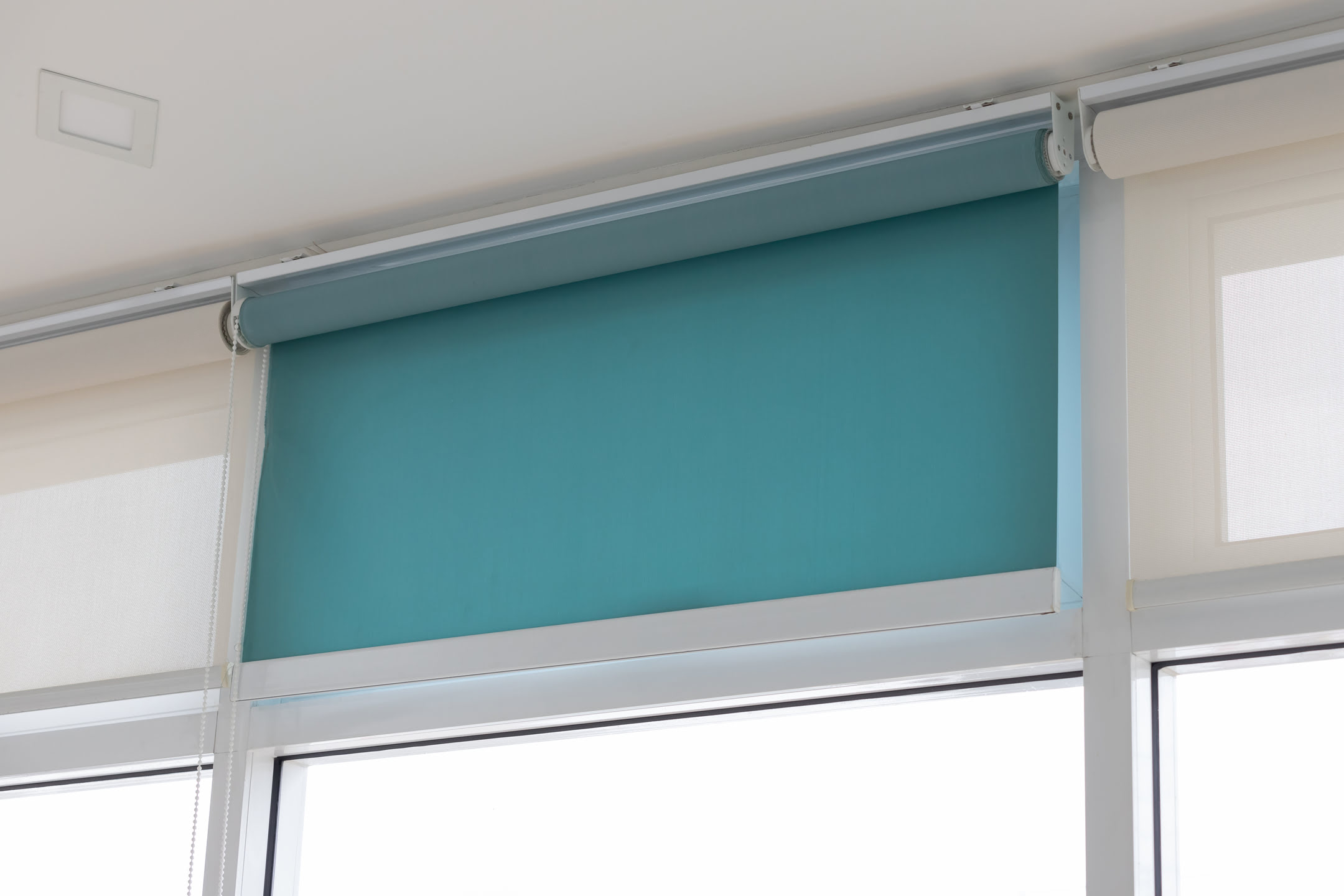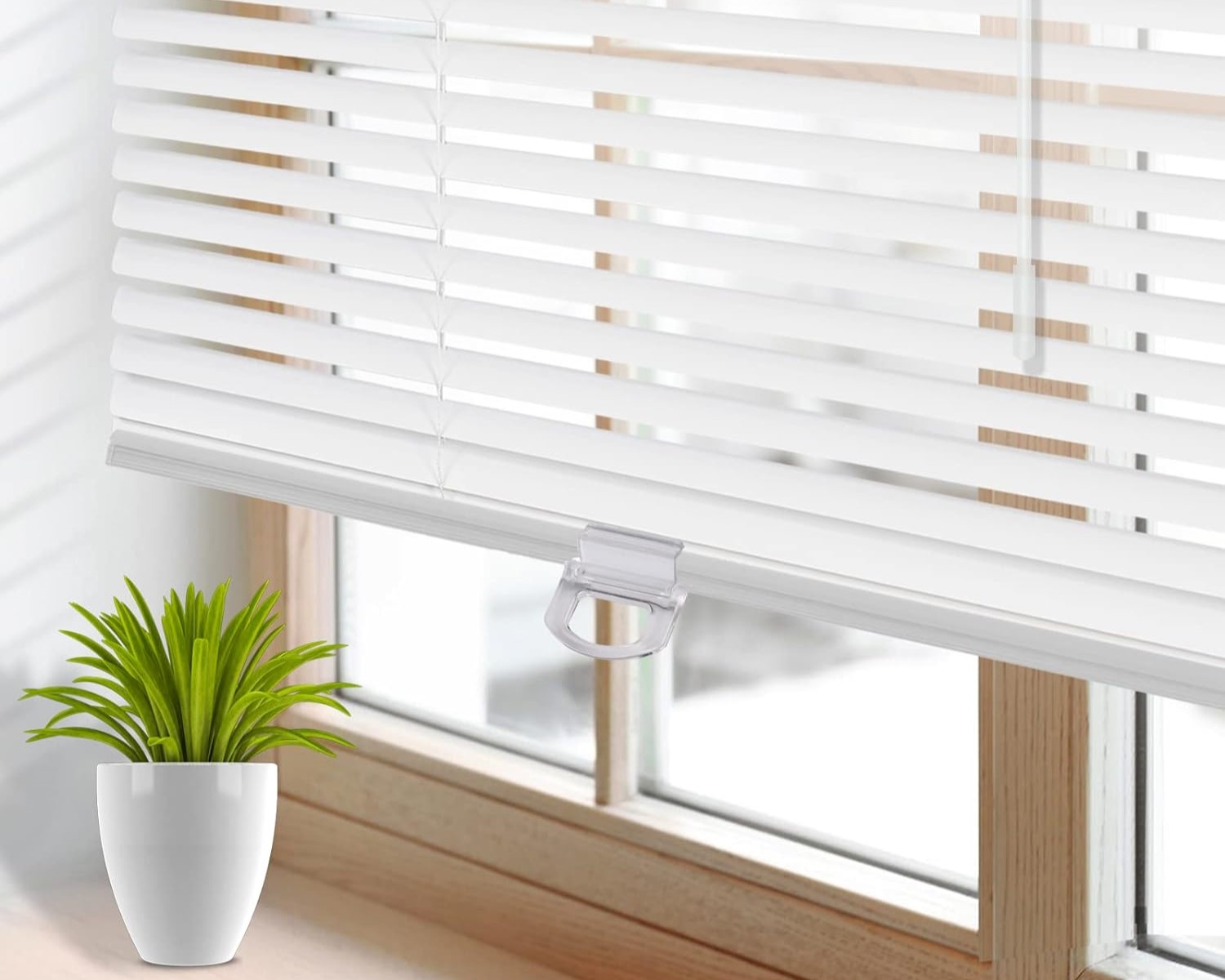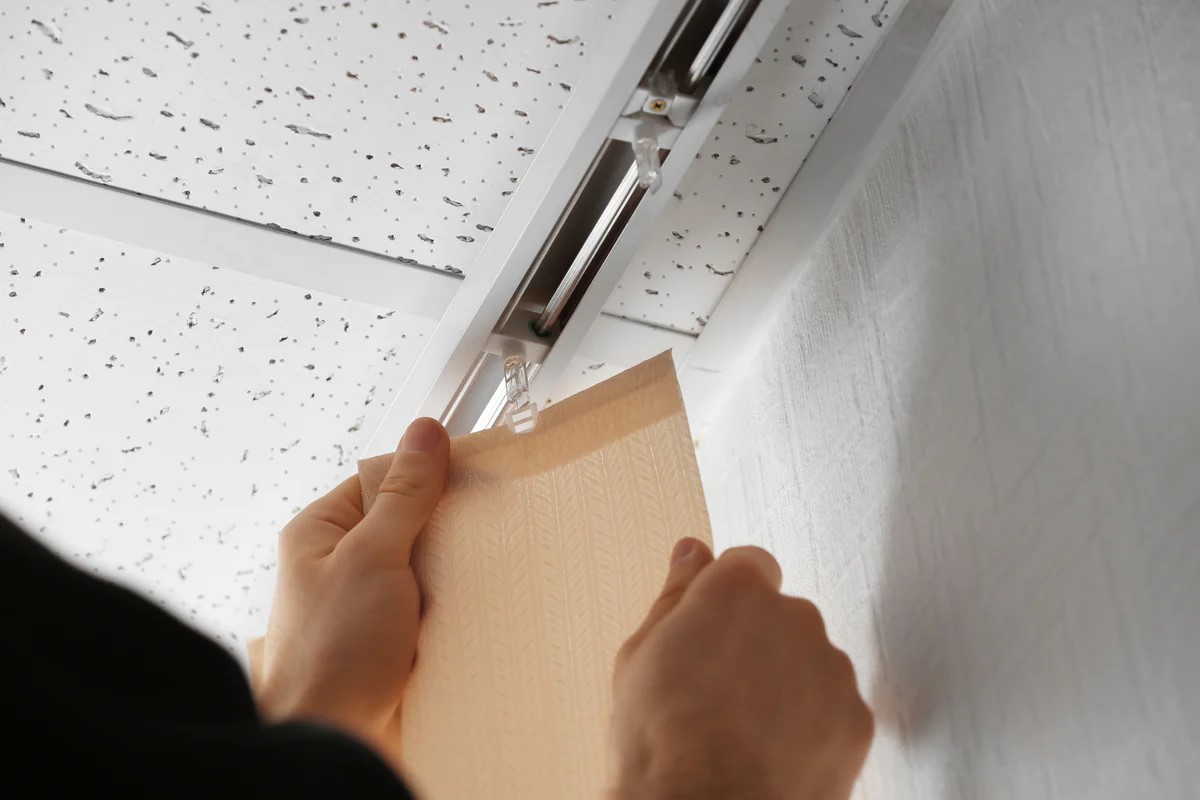Home>Articles>How To Fix Cordless Blinds That Won’t Go Up Or Down


Articles
How To Fix Cordless Blinds That Won’t Go Up Or Down
Modified: August 28, 2024
Discover the best articles on how to troubleshoot and fix cordless blinds that won't move up or down. Learn simple and effective solutions to get your blinds working smoothly again.
(Many of the links in this article redirect to a specific reviewed product. Your purchase of these products through affiliate links helps to generate commission for Storables.com, at no extra cost. Learn more)
Introduction
When you have cordless blinds, they are designed to provide convenience and ease of use. However, there may come a time when your cordless blinds refuse to go up or down, causing frustration and inconvenience. Before you start to panic or consider buying new blinds, it’s important to understand that there are common causes for this issue, and in many cases, you can easily fix it yourself.
In this article, we will explore the common causes for cordless blinds not functioning properly and provide troubleshooting steps to help you get your blinds working smoothly again. By following these steps, you can save both time and money, and have your cordless blinds operational in no time.
Key Takeaways:
- Troubleshooting cordless blinds that won’t go up or down involves checking batteries, verifying proper installation, examining the lift mechanism, cleaning, and adjusting tension. These steps can often resolve common issues and restore functionality.
- Seeking professional assistance may be necessary if DIY troubleshooting fails. Professionals can handle complex repairs, provide expert guidance, and ensure the effective resolution of the problem, especially for issues covered by warranty.
Read more: How To Pull Down Cordless Blinds
Common Causes for Cordless Blinds Not Going Up or Down
There are a few common causes for cordless blinds not functioning properly. Identifying the root cause will help you troubleshoot the issue effectively. Here are some potential reasons why your cordless blinds may not be going up or down:
- Dead or Low Batteries: One of the most common causes is dead or low batteries. Cordless blinds rely on batteries for the motorized operation, so if the batteries are depleted or not inserted correctly, it can prevent the blinds from moving.
- Improper Installation: Another reason for your cordless blinds not functioning properly could be improper installation. If the blinds were not installed correctly, it can interfere with the smooth operation of the blinds.
- Faulty Lift Mechanism: The lift mechanism in cordless blinds is responsible for raising and lowering the blinds. If this mechanism gets jammed or damaged, it can prevent the blinds from moving.
- Dirt and Debris Buildup: Over time, dirt, dust, and debris can accumulate in the tracks or mechanism of the blinds, causing them to become stiff or stuck. This buildup can impede the smooth movement of the blinds.
- Incorrect Tension Adjustment: Cordless blinds typically have an adjustable tension feature that allows you to customize the resistance when raising or lowering the blinds. If the tension is set too high or too low, it can affect the movement of the blinds.
- Mechanical Malfunction: In some cases, there may be a mechanical malfunction or defect in the blinds that is preventing them from functioning properly. This could be due to a manufacturing defect or wear and tear over time.
By understanding these common causes, you can begin to troubleshoot the specific issue with your cordless blinds and take appropriate steps to fix them. In the next section, we will discuss some troubleshooting steps that you can follow to resolve the problem.
Troubleshooting Steps to Fix Cordless Blinds
When your cordless blinds are not going up or down, troubleshooting the issue can help you identify and resolve the problem. Here are some steps you can follow to fix your cordless blinds:
- Checking the Batteries: Start by checking the batteries in the motorized mechanism of the blinds. Ensure that the batteries are inserted correctly and have sufficient charge. If the batteries are dead or low, replace them with fresh ones.
- Verifying Proper Installation: Double-check the installation of the blinds to ensure that they are properly mounted and aligned. Look for any loose brackets or misaligned parts that can hinder the smooth operation of the blinds. Adjust or re-install the blinds if necessary.
- Examining the Lift Mechanism: Inspect the lift mechanism of the blinds for any damage or obstructions. Gently lift the blinds by hand to see if they move smoothly. If you notice any jammed or broken parts, you may need to repair or replace the lift mechanism.
- Cleaning and Lubricating the Blinds: Dirt and debris buildup can cause the blinds to become stiff and difficult to operate. Clean the tracks, slats, and mechanism of the blinds using a soft brush or cloth. Apply a silicone-based lubricant to the moving parts to ensure smooth movement.
- Adjusting the Tension: If the tension of the blinds is not set correctly, it can affect their movement. Locate the tension adjustment mechanism on the blinds and adjust it according to your preference. Experiment with different tension levels until you find the right balance of resistance.
- Seeking Professional Assistance: If you have tried these troubleshooting steps but still can’t get your cordless blinds to work, it may be time to seek professional assistance. Contact a reputable blinds repair service or the manufacturer for expert help and guidance.
Remember to approach these troubleshooting steps with caution and follow any safety instructions provided by the blinds manufacturer. If you are unsure or uncomfortable with any of the steps, it is best to consult a professional to avoid causing further damage to your blinds.
By following these troubleshooting steps, you can often resolve common issues with cordless blinds not going up or down. However, in some cases, the problem may be more complex, requiring professional repair or replacement. In the next section, we will conclude our article with a few final thoughts.
Checking the Batteries
When your cordless blinds refuse to go up or down, the first step is to check the batteries. Cordless blinds rely on batteries to power the motorized mechanism that controls their movement. If the batteries are dead or low, it can prevent the blinds from functioning properly.
Begin by locating the battery compartment in your blinds. This is usually located on one end of the blinds, either near the top or bottom. Open the compartment and check the batteries to ensure they are inserted correctly. Sometimes, the batteries might have come loose or lost their connection.
If the batteries are depleted, replace them with fresh ones. It is recommended to use high-quality batteries for better performance and longer battery life. Ensure that the batteries are of the correct type as specified by the blinds manufacturer.
After inserting new batteries, try operating the blinds again to see if they function properly. If the blinds still do not move, test the batteries using a battery tester or by placing them into another device that requires the same type of batteries. This will help determine if the issue lies with the batteries or if there is another underlying problem.
If the problem persists even after replacing the batteries, it might be worth trying a different set of high-quality batteries to rule out any issues with the batteries themselves.
In some cases, even if the batteries are functioning correctly, the battery contacts inside the blinds may be dirty or corroded, preventing a proper connection. Clean the battery contacts using a cotton swab dipped in rubbing alcohol or a battery contact cleaner. Gently rub the contacts to remove any dirt or corrosion that may be hindering the electrical connection.
Once you have checked and verified the batteries, reinserted them correctly, and cleaned the battery contacts if necessary, attempt to operate the blinds again. If the batteries were the cause of the issue, the blinds should now respond and move up and down smoothly.
If the blinds still do not function after checking the batteries, proceed to the next troubleshooting step to identify and resolve any other potential causes.
Verifying Proper Installation
Improper installation can often be a culprit when cordless blinds refuse to go up or down. It is crucial to ensure that your blinds are installed correctly to facilitate their smooth operation. Here are some steps to verify the proper installation of your cordless blinds:
1. Check Bracket Alignment: Start by examining the brackets that hold the blinds in place. Ensure that they are securely mounted and aligned properly. Misaligned or loose brackets can interfere with the movement of the blinds. Use a level to ensure that they are straight and parallel to each other.
2. Inspect Secure Fastening: Verify that the blinds are securely fastened to the brackets. Sometimes, the blinds may come loose due to frequent use or improper installation. Tighten any screws or fasteners to ensure a secure attachment.
3. Check for Obstructions: Carefully inspect the area around the blinds for any obstructions that may hinder their movement. It could be furniture, wall hangings, or any other objects that are blocking the blinds from fully raising or lowering. Remove any obstructions to allow for unrestricted movement.
4. Ensure Smooth Track Operation: If your cordless blinds operate on a track system, check the tracks for any obstructions or debris. Clean the tracks thoroughly to ensure smooth gliding of the blinds. If the tracks are damaged or misaligned, you may need to repair or replace them for proper functioning.
5. Reinstall and Test: If you suspect that the blinds were not installed correctly, you may need to reinstall them. Carefully remove the blinds from the brackets and reinstall them, ensuring proper alignment and secure fastening. Once reinstalled, test the blinds to see if they go up and down smoothly.
If the issue persists even after verifying proper installation, there may be another underlying cause for the blinds not moving. Proceed to the next troubleshooting step to further investigate and resolve the problem.
Remember, it’s important to follow the specific installation instructions provided by the blinds manufacturer. If you are unsure or uncomfortable with reinstalling the blinds, it is recommended to seek professional assistance to avoid causing any damage.
Check the batteries in the remote or the power source for motorized blinds. If the batteries are dead, replace them. If the power source is not working, troubleshoot or replace it. If the blinds are still not working, contact the manufacturer for further assistance.
Read more: How To Fix Top Down Bottom Up Blinds
Examining the Lift Mechanism
When your cordless blinds are not going up or down, it’s essential to examine the lift mechanism to identify any possible issues. The lift mechanism is responsible for raising and lowering the blinds, and if it becomes jammed or damaged, it can prevent smooth operation. Here are some steps to examine the lift mechanism:
1. Identify the Lift Strings or Cords: Take a close look at the lift strings or cords that are attached to the blinds. Ensure that they are properly threaded through the lift mechanism and are not tangled or twisted. If there are any tangles or knots, carefully untangle them to allow for unrestricted movement.
2. Inspect for Obstructions: Check for any objects or debris that may be obstructing the movement of the lift mechanism. It could be dust, lint, or even small insects that have made their way into the mechanism. Use a small brush or vacuum cleaner to gently remove any obstructions without damaging the mechanism.
3. Test Manual Operation: If your cordless blinds have a manual override option, try manually lifting and lowering the blinds using the lift strings or cords. If the blinds move smoothly when controlled manually, it indicates that the issue might lie with the motorized mechanism. In such cases, skip to the troubleshooting step specific to the motorized mechanism.
4. Check for Broken Components: Carefully examine the lift mechanism for any broken or damaged components. Look for any signs of wear and tear, cracked gears, or loose connections. If any parts of the mechanism are broken, you may need to replace them to restore proper functionality.
5. Lubrication: Apply a small amount of silicone-based lubricant to the moving parts of the lift mechanism. This can help reduce friction and ensure smooth operation. Be cautious not to apply too much lubricant, as it can attract dirt and cause buildup over time.
6. Seek Professional Help: If you are unable to identify or resolve the issue with the lift mechanism, it is recommended to seek professional assistance. Contact a blinds repair service or the manufacturer for expert help and guidance.
By carefully examining the lift mechanism and addressing any issues found, you can often restore the proper functioning of your cordless blinds. However, if the issue persists, move on to the next troubleshooting step to explore other possible causes for the blinds not moving.
Cleaning and Lubricating the Blinds
Over time, dirt, dust, and debris can accumulate in the tracks, slats, and mechanisms of cordless blinds, causing them to become stiff or stuck. Cleaning and lubricating the blinds can help restore their smooth operation. Here are some steps to clean and lubricate your cordless blinds:
1. Gather Cleaning Supplies: Before you begin, gather the necessary cleaning supplies. You will need a soft brush, a microfiber cloth, mild dish soap, warm water, and a silicone-based lubricant.
2. Remove Dust and Debris: Start by using a soft brush or a vacuum cleaner with a brush attachment to remove any loose dust and debris from the blinds. Pay close attention to the slats and the mechanism of the blinds.
3. Clean with Warm Soapy Water: Prepare a solution of mild dish soap and warm water. Dip a microfiber cloth into the soapy water and gently wipe down the slats and mechanism of the blinds. Take care not to wet the blinds excessively, as this can damage the material or the mechanism.
4. Rinse and Dry: After cleaning, rinse the blinds with a clean damp cloth to remove any soap residue. Then, use a dry microfiber cloth to gently pat them dry. Make sure the blinds are completely dry before proceeding to the next step.
5. Lubricate the Mechanism: Apply a small amount of silicone-based lubricant to the moving parts of the blinds’ mechanism. Focus on the pivot points, hinges, and any other areas that require lubrication. Be cautious not to apply too much lubricant, as an excessive amount can attract dust and debris.
6. Test Operation: Once you have cleaned and lubricated the blinds, test their operation by attempting to raise and lower them. They should move more smoothly now, with minimal resistance or sticking.
7. Regular Maintenance: To keep your cordless blinds in optimal condition, it is recommended to perform regular cleaning and maintenance. Dust them regularly using a soft brush or vacuum cleaner to prevent the buildup of dirt and debris. Additionally, you can apply a small amount of lubricant to the moving parts once every few months to ensure smooth operation.
Regular cleaning and lubrication can significantly improve the functionality and longevity of your cordless blinds. However, if the blinds still do not move smoothly, continue to the next troubleshooting step to explore additional solutions.
Adjusting the Tension
The tension of cordless blinds plays a crucial role in their smooth operation. If the tension is not set correctly, it can affect the movement of the blinds, causing them to be too loose or too tight. Adjusting the tension can help resolve issues with the blinds not going up or down. Here are the steps to adjust the tension of your cordless blinds:
1. Locate the Tension Mechanism: Identify the tension mechanism on your cordless blinds. This is usually a small wheel or a dial located on one side of the blinds. It allows you to increase or decrease the tension resistance when raising or lowering the blinds.
2. Decrease the Tension: If the blinds are too tight and require excessive force to operate, you may need to decrease the tension. Rotate the tension mechanism in a counterclockwise direction, gradually loosening it. Test the blinds after each adjustment to see if they move more smoothly.
3. Increase the Tension: If the blinds are too loose and tend to fall down on their own, you should increase the tension. Rotate the tension mechanism in a clockwise direction, gradually tightening it. Test the blinds after each adjustment to see if they remain in the desired position without slipping down.
4. Fine-Tune the Tension: Adjust the tension mechanism in small increments until you find the right balance of resistance. The blinds should move up and down with ease, without requiring excessive force or slipping down unintentionally.
5. Test the Operation: After adjusting the tension, test the operation of the blinds to ensure they move smoothly and stay in the desired position. Raise and lower them multiple times to evaluate their functionality. If needed, make further adjustments to achieve the desired tension level.
It’s important to remember that adjusting the tension can be a trial-and-error process. Every blinds system is different, and finding the optimal tension may take some experimentation. Take your time and make small adjustments until you achieve the desired result.
If you find that adjusting the tension does not resolve the issue with your cordless blinds, proceed to the next troubleshooting step to investigate further or consider seeking professional assistance.
Seeking Professional Assistance
If you have gone through the previous troubleshooting steps but are still unable to fix your cordless blinds, it may be time to seek professional assistance. A blinds repair service or the manufacturer of your blinds can provide expert help in diagnosing and resolving the issue. Here are some reasons why seeking professional assistance may be necessary:
1. Complex Repairs: If the problem with your cordless blinds involves complex repairs, such as replacing internal components or fixing motorized mechanisms, it is best to leave it to professionals. They have the knowledge, experience, and tools required to handle intricate repairs effectively.
2. Manufacturer’s Warranty: If your cordless blinds are still under warranty, contacting the manufacturer for assistance is highly recommended. They may offer free repairs or replacements for defective blinds. Be sure to check the terms and conditions of the warranty before seeking professional help.
3. Preventing Further Damage: Attempting to fix the blinds yourself without proper knowledge or experience can potentially cause further damage. Professional assistance ensures that the problem is addressed correctly, minimizing the risk of causing irreparable harm to your blinds.
4. Safety Considerations: Some repairs may involve electrical or mechanical components that require specialized knowledge and safety precautions. Professionals are trained to handle such situations safely, reducing the risk of accidents or injuries.
5. Expert Advice and Guidance: Professionals in the blinds industry have extensive knowledge about different types of blinds and their unique issues. They can provide expert advice and guidance on the best course of action, whether it’s repair, replacement, or upgrading to a more suitable blinds system.
To seek professional assistance, reach out to a reputable blinds repair service or contact the customer support of your blinds manufacturer. Explain the issue you are experiencing and provide any relevant details about your blinds. They will guide you through the next steps, which may include scheduling a service visit or shipping the blinds for repair.
Remember, seeking professional assistance ensures that your cordless blinds are handled with care, resulting in the most effective and long-lasting solution. If other troubleshooting steps have been unsuccessful, reaching out to professionals is the best way to resolve the issue and get your blinds functioning properly again.
Read more: How To Fix Window Blinds That Won’t Go Down
Conclusion
Having cordless blinds that refuse to go up or down can be frustrating, but there are several troubleshooting steps you can take to resolve the issue. By understanding the common causes and following the appropriate steps, you can often fix the problem yourself, saving time and money.
Start by checking the batteries to ensure they are inserted correctly and have sufficient charge. Improper installation can also hinder the smooth operation of the blinds, so verify that they are mounted securely and aligned properly. Examining the lift mechanism can help you identify any jammed or damaged parts that may be causing the issue. Furthermore, cleaning and lubricating the blinds, as well as adjusting the tension, can improve their functionality.
If, despite your best efforts, the problem persists, it may be necessary to seek professional assistance. Blinds repair services or the manufacturer can provide expert help and guidance, especially for complex repairs or issues covered by warranty. Professional assistance can prevent further damage and ensure the effective resolution of the problem.
Regular maintenance and care of your cordless blinds can help prolong their lifespan and prevent future issues. Clean them regularly, remove dust and debris, and lubricate the moving parts as needed. By following these simple maintenance practices, you can keep your cordless blinds in optimal working condition for years to come.
In conclusion, troubleshooting issues with cordless blinds not going up or down is possible with a systematic approach and a bit of patience. By identifying the root cause and following the appropriate steps, you can often resolve the problem and enjoy the convenience of your cordless blinds once again.
Frequently Asked Questions about How To Fix Cordless Blinds That Won't Go Up Or Down
Was this page helpful?
At Storables.com, we guarantee accurate and reliable information. Our content, validated by Expert Board Contributors, is crafted following stringent Editorial Policies. We're committed to providing you with well-researched, expert-backed insights for all your informational needs.
